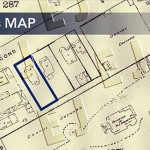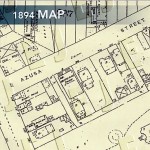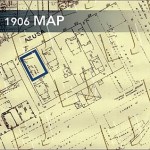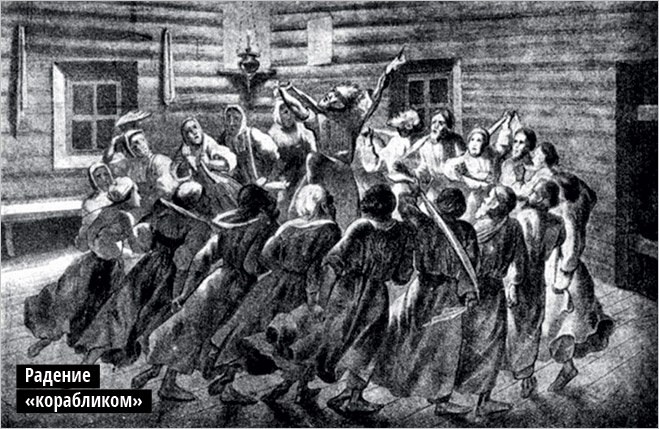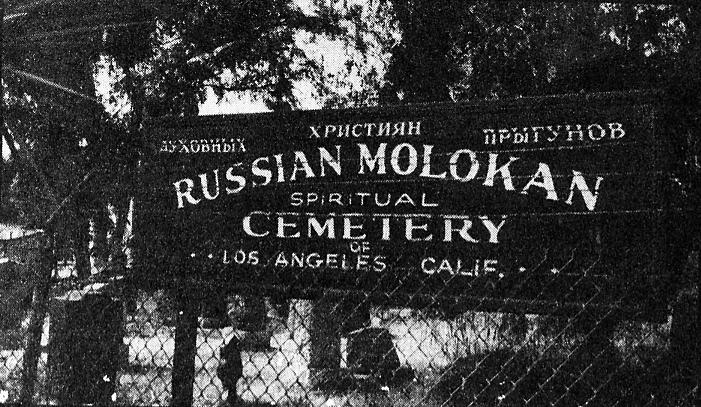TRUTHS from AZUSA STREET REVIVAL by Frank Bartleman
“A revival almost always begins among the laity. The ecclesiastical leaders seldom welcome reformation.”
One reason for the depth of the work at “Azusa” was the fact that
the workers were not novices. They were largely called and prepared
for years, from the Holiness ranks, and from the mission field, etc.
They had been burnt out, tried and proven. They were largely
seasoned veterans. They had walked with God and learned deeply
of His Spirit. These were pioneers, “shock troops,” the Gideon´s
three hundred, to spread the fire around the world. Just as the
disciples had been prepared by Jesus.
We have now taken on a “mixed multitude.” And the seeds of
apostacy have had time to work. “First love” has been also
largely lost. The dog has “returned to his vomit” in many cases,
to Babylonic doctrines and practices. An enfeebled mother can
hardly be expected to bring forth healthy children.
The very truths that gave birth to the Pentecostal movement are
today generally rejected as too strong.
A revival almost always begins among the laity. The ecclesiastical
leaders seldom welcome reformation. History repeats itself. The
present leaders are too comfortably situated as a rule to desire
innovation that might require sacrifice on their part. And God’s
fire only falls on sacrifice. An empty altar receives no fire!
God has always sought a humble people. He can use no other…
There is always much need of heart preperation, in humility and
separation, before God can consistently come. The depth of
any revival will be determined exactly by the spirit of repentance
that is obtained. In fact, this is key to every true revival born of God.
Men’s hearts are being searched…it is a tremendous sifting time,
not only of actions but of inner motives. Nothing can escape the
all-searching eye of God.
TRUTHS from AZUSA STREET REVIVAL by Frank Bartleman
“A revival almost always begins among the laity. The ecclesiastical leaders seldom welcome reformation.”
One reason for the depth of the work at “Azusa” was the fact that
the workers were not novices. They were largely called and prepared
for years, from the Holiness ranks, and from the mission field, etc.
They had been burnt out, tried and proven. They were largely
seasoned veterans. They had walked with God and learned deeply
of His Spirit. These were pioneers, “shock troops,” the Gideon´s
three hundred, to spread the fire around the world. Just as the
disciples had been prepared by Jesus.
We have now taken on a “mixed multitude.” And the seeds of
apostacy have had time to work. “First love” has been also
largely lost. The dog has “returned to his vomit” in many cases,
to Babylonic doctrines and practices. An enfeebled mother can
hardly be expected to bring forth healthy children.
The very truths that gave birth to the Pentecostal movement are
today generally rejected as too strong.
A revival almost always begins among the laity. The ecclesiastical
leaders seldom welcome reformation. History repeats itself. The
present leaders are too comfortably situated as a rule to desire
innovation that might require sacrifice on their part. And God’s
fire only falls on sacrifice. An empty altar receives no fire!
God has always sought a humble people. He can use no other…
There is always much need of heart preperation, in humility and
separation, before God can consistently come. The depth of
any revival will be determined exactly by the spirit of repentance
that is obtained. In fact, this is key to every true revival born of God.
Men’s hearts are being searched…it is a tremendous sifting time,
not only of actions but of inner motives. Nothing can escape the
all-searching eye of God.
The Forgotten Azusa Street Mission: The Place where the First Pentecostals Met
For years, the building on Azusa Street has also been an enigma. Most people are familiar with the same three or four photographs that have been published and republished through the years. They show a rectangular, boxy, wood frame structure that was 40 feet by 60 feet and desperately in need of repair. Seymour began his meetings in the Mission on April 15, 1906. A work crew set up a pulpit made from a wooden box used for shipping shoes from the manufacturer to stores. The pulpit sat in the center of the room. A piece of cotton cloth covered its top. Osterberg built an altar with donated lumber that ran between two chairs. Space was left open for seekers. Bartleman sketched seating as nothing more than a few long planks set on nail kegs and a ragtag collection of old chairs.
What the new sources have revealed about the Mission, however, is fascinating. The people worshiped on the ground level — a dirt floor, on which straw and sawdust were scattered. The walls were never finished, but the people whitewashed the rough-cut lumber. Near the door hung a mailbox into which tithes and offerings were placed since they did not take offerings at the Mission. A sign greeted visitors with vivid green letters. It read “Mene, Mene, Tekel, Upharsin” (Daniel 5:25, kjv), with its Ns written backwards and its Ss upside down. Men hung their hats on exposed overhead rafters where a single row of incandescent lights ran the length of the room.
These sources also reveal that the atmosphere within this crude building — without insulation or air conditioning, and teeming with perspiring bodies — was rank at best. As one writer put it, “It was necessary to stick one’s nose under the benches to get a breath of air.”
Several announced that the meetings were plagued by flies. “Swarms of flies,” wrote one reporter, “attracted by the vitiated atmosphere, buzzed throughout the room, and it was a continual fight for protection.”
A series of maps drawn by the Sanborn Insurance Company give a clear picture of the neighborhood. The 1888 map discloses that Azusa Street was originally Old Second Street. The street was never more than one block in length. It ended at a street paving company with piles of coal, along with heavy equipment. A small house, marked on the map by a “D” for domicile, sat on the front of the property with the address of 87. (See highlighted section.) A marble works business specializing in tombstones stood on the southeast corner of Azusa Street and San Pedro. Orange and grapefruit orchards surrounded the property. On the right of the map a Southern Pacific railroad spur is clearly visible. The City Directory indicates that the neighborhood was predominantly Jewish, though other names were mixed among them.
A second map of the property was published in 1894. Old Second Street had become Azusa Street, and the address had been changed to 312. The house had been moved further back on the property where it served as a parsonage. The dominant building at 312 Azusa Street was the Stevens African Methodist Episcopal Church. At the front of the building a series of tiny parallel lines on the map mark a staircase that stood at the north end of the building providing entry to the second floor, the original sanctuary.
The only known photograph of the church from this period shows three interesting features. First, it shows the original staircase. Second, and less obvious, the original roofline had a steep pitch. Third, three gothic style windows with tracery lines adorned the front wall.
By 1894, the citrus groves had largely disappeared. On the southern side they were replaced by lawn. The smell of orange blossoms and the serenity of the orchard were rapidly being replaced by the banging of railroad cars and the smell of new lumber. A growing number of boarding houses and small businesses, including canneries and laundries, were moving into the immediate area by this time. The property marked “YARD” on the map is the beginning of the lumberyard that soon came to dominate the area. The City Directory reveals fewer Jewish names, and more racial and ethnic diversity in the neighborhood, including African Americans, Germans, Scandinavians, and Japanese.
Stevens AME Church occupied the building at 312 Azusa Street until February 1904 when the congregation dedicated a new brick facility at the corner of 8th and Towne and changed their name to First AME Church. Before the congregation could decide what to do with the property on Azusa Street, however, an arsonist set the vacant church building on fire. The structure was greatly weakened, and the roof was completely destroyed. The congregation decided to turn the building into a tenement house. They subdivided the former second-floor sanctuary into several rooms separated by a long hallway that ran the length of the building. The stairs were removed from the front of the building and a rear stairwell was constructed, leaving the original entry hanging in space. The lower level was used to house horses and to store building supplies, including lumber and nails.
In 1906, a new Sanborn Map was published. (See 1906 map.) The building was marked with the words “Lodgings 2nd, Hall 1st, CHEAP.” The transition of the neighborhood had continued. The marble work still occupied the southeast corner of Azusa Street and San Pedro, but a livery and feed supply store now dominated the northeast corner. A growing lumberyard to the south and east of the property now replaced the once sprawling lawn. A Southern Pacific railroad spur curved through the lumberyard to service this business.
The Apostolic Faith, the newspaper of the Azusa Street Mission between September 1906 and June 1908, later referred to the nearby Russian community. Many of these recent immigrants were employed in the lumberyard. They were not Russian Orthodox Christians as one might guess; they were Molokans — “Milk drinkers.” This group had been influenced by some of the 16th-century Reformers. They did not accept the dairy fasts of the Orthodox Church. They were Trinitarians who strongly believed in the ongoing guidance of the Holy Spirit. Demos Shakarian, grandfather of the founder of Full Gospel Business Men’s International, was among these immigrants who were led to Los Angeles through a prophetic word given in 1855.
Henry McGowan, later an Assemblies of God pastor in Pasadena, was a member of the Holiness Church at the time. He was employed as a teamster. He timed his arrival at the nearby lumberyard so he could visit the Mission during its afternoon services.
This map suggests why some viewed the Mission as being in a slum. A better description would be an area of developing light industry.
In April 1906, when the people who had been meeting at the house at 214 North Bonnie Brae Street were forced to move, they found the building at 312 Azusa Street was for sale. The photograph below taken about the time that the congregation chose to move into the building shows the “For Sale” sign posted high on the east wall of the building, as well as the rear of the tombstone shop. Seymour, pastor of the Azusa Street Mission, and a few trusted friends met with the pastor of First AME Church and negotiated a lease for $8 a month.
An early photograph reveals what the 1906 version of the map indicates. The pitched roof had not been replaced. The building had a flat roof. The staircase that had stood at the front of the building had been removed.
In a sense, this building suited the Azusa Street faithful. They were not accustomed to luxury. They were willing to meet in the stable portion of the building. The upstairs could be used for prayer rooms, church offices, and a home for Pastor Seymour.
Articles of incorporation were filed with the state of California on March 9, 1907, and amended May 19, 1914. The church negotiated the purchase of the property for $15,000 with $4,000 down. It was given the necessary cash to retire the mortgage in 1908. The sale was recorded by the County of Los Angeles on April 12, 1908.
Spurling and Tomlinson: Between Azusa Street and Cleveland
Were Molokans the first to Speak in Tongues at Azusa?
Adopted from Andrei Conovaloff
American Molokan Dukh-i-zhiznik (lit. living in the Spirit) oral history (documented in the Book of the Sun: Spirit and Life, Dukh i zhizn’) reports that Molokani and Pryguny received the “outpouring of the Holy Spirit” in the Milky Waters region (now in Ukraine) in 1833. The diary of Vassili V. Verestchagin documents that Pryguny (lit. leapers) in the Caucasus in the early 1860s spoke in tongues, jumped to exhaustion, and held hands up in the air for more than an hour. These charismatic practices continue among Dukh-i-zhizniki in the U.S. and Australia.
From 1906 to 1909, the Apostolic Faith Mission conducted three services a day, seven days a week, for over three years or 1000+ services! Thousands of seekers received the “tongues” baptism, including many Molokani and Pryguny. Also many public Pentecostal revivals were conducted in tent meetings on Oake’s lot and other locations around the Flats area slums were Russian settled. English speaking Pryguny and other Russians immigrants often translated at the services. Oake’s lot later became Pecan Playground, at First and Pecan Streets.
In Molokans in America (pages 101-102, ch. 5), John K. Berokoff reports about the connection between Prygun leader Philip Mikhailovich Shubin and the early Pentecosts:
“During his 27 years in America he was the outstanding speaker and orator of the brotherhood with a wide acquaintance among non-Molokans , not infrequently taking a choir of singers to Pentecostal church meetings where he preached and explained the Molokan reasons for their migration. It was his wisdom, his profound knowledge of the scriptures plus his wide knowledge of Russian literature that enabled him to repel the periodic attempts by leaders of neighboring denominations—Baptists, Pentecostals, etc.—to proselytize the Molokan people …”
More evidence of connections between the Azusa Street Revival and the Pryguny is reported in the newspaper The Apostolic Faith, which was distribute free to 50,000 subscribers, when the population of Los Angeles was 250,000. Many Russian sectarians in Flats knew about this church and saw this free paper, especially since it reported about them in the first issue, the church was within walking distance, and elders exchanged visits.
1906 September — The Apostolic Faith (Volume 1 Number 1) — The first edition of the newspaper reports that Apostolic Faith Mission members spoke at a Prygun prayer meeting. In 1906, Pryguny held Sunday services at the Bethlehem Institutional Church and the Stimson-Lafayette Industrial School, and welcomed guests at both locations which were 1/2 block from each other and about 1/4 mile east of the Apostolic Faith Mission. The Pentecosts invited the Pryguny to attend their meetings, which many did with a translator:
RUSSIANS HEAR IN THEIR OWN TONGUE
“Different nationalities are now hearing the Gospel in their own “tongue wherein they were born.” Sister Anna Hall spoke to the Russians in their church in Los Angeles, in their own language as the Spirit gave utterance. They were so glad to hear the truth that they wept and even kissed her hands [showing respect]. They are a very simple, pure, and hungry people for the full Gospel. The other night, as a company of Russians were present in the meeting, Bro. Lee, a converted Catholic, was permitted to speak [translate] their [Russian] language. As he spoke and sang, one of the Russians came up and embraced him. It was a holy sight, and the Spirit fell upon the Russians, as well as on others, and they glorified God.”
1907 April — The Apostolic Faith (Volume 1 Number 7) — The 7th edition reports about the Russian and Armenian Pryguny in the Flats:
“Russians and Armenians in Los Angeles are seeking the baptism. The Armenians have a Pentecostal cottage meeting on Victor street, between 4th and 5th [Now under the I-5 Freeway]. Some have been baptized with the Holy Ghost.”
In his 2006 book, The Azusa Street Mission and Revival: The Birth of the Global Pentecostal Movement, Cecil Robeck reports that in 1906 Los Angeles had a population of 238,000 and was growing at the rate of 3,000 (1.3%) per month, as ~ 4,000 Russian sectarians migrated to the U.S. He mentions the Russian and Armenian Pryguny at least 5 times in his book:
[Page 57] Finally, between 1903 and 1912 several thousand Russians and Armenians arrived in the city, refugees from Russia’s increasingly repressive government. Unlike most Russians, they did not belong to the Orthodox church. They were [Spiritual Christian ethnic] Molokans, literally “milk drinkers,” a name they received because they refused to fast from dairy products during traditional fast days. More importantly, they could be described as a “proto-Protestant'” group, since they had been influenced by some of the sixteenth-century Reformers. They also had a special appreciation for the Holy Spirit. Many of them claimed that they had been directed to leave southern Russia through the gift of prophecy. They engaged in what was often described as ecstatic behavior, jumping and dancing; falling on the floor when they believed that they were possessed of the Holy Spirit to do so; and singing chant-like songs that strongly paralleled the “singing in the Spirit” (a multi-layered, harmony-rich singing in tongues that are unknown to the singers and are believed to be inspired by the Holy Spirit) at the Azusa Street Mission.
[Page 94] As the revival grew … Seymour celebrated the spread of the revival to other congregations … the Russian Molikan [sic] community, … He viewed them as fellow-workers.
[Page 138] While the mission was led by an African American pastor, dominated by and African American membership, and heavily influenced by African American worship patterns, it quickly developed into a multi-ethnic and multiracial congregation. … non-African-Americans did bring their own gifts and experiences. … Recent Russian and Armenian Molokan [Spiritual Christian] immigrants already practiced the unusual jumping and chanting also found at the mission. … This was a revival unlike any other the city of Los Angeles had ever seen … African Americans, Latinos, Armenians, Russians, Swedes, Germans, Italians, Chinese, Japanese, Native Americans, and other ethnic groups … bountiful expressions of ecstatic manifestation such as speaking in tongues, prophesying, claims of dreams and visions, trances, healings, exorcism, and falling “in the Spirit.”
[Page 153] “Singing in the Spirit” accomplished more than an expression of worship, however. It also provided a bridge that brought Russian and Armenian Molokans [Spiritual Christian Jumpers] into the mission — among them the Shakarian and Mushegian families. These families arrived in Los Angeles in the 1905 emigration. The Molokans commonly practiced a king of “sing-song” prayer, a form of vocal prayer and praise that resembled singing in Spirit.” Walking down San Pedro Street in 1905, Demos Shakarian, grandfather of the Demos Shakarian who would later found the Full Gospel Businessman’s Association, and his brother-in-law, Magardich Muchegian, passed the Azusa Street Mission. As they drew near, they heard sounds of praying, singing, and speaking in tongues coming from the mission — expressions that they identified as similar to their own. The single phenomenon of “singing in tongues” convinced Demos to embrace the mission as a place his family could worship. From the moment he heard it, he concluded that God was also beginning to move to America just as He had in their homeland of America and in Russia.”(27)
[Pages 189-190] At the same time a group of Armenians and Russians [Spiritual Christian Pryguny], who had come to Los Angeles in the Molokans immigration, opened cottage prayer meetings on Victoria Street between West Fourth and Fifth Streets that would quickly develop into an Armenians-language Pentecostal church.
American-born Armenian-Prygun historian Joyce Bivin comments: We have a similar story in our community about the Azusa Street Revival. The story goes like this — quoted from a letter by M. Mushagian:
“Our people came to Los Angeles right after the Azusa Street Revival. They used to attend the meetings even though they didn’t understand the American language. They saw that the Holy Spirit was moving there like it did in the Old Country. So they accepted Pentecostal because they believed in Acts 2:4.”
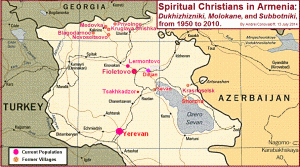 The Armenians apparently were worshiping in this manner, including dancing in the Spirit, (jumping, which my grandmother did at one of the Paskha meetings and the next day mother told me she was healed of whatever affliction she had at the time), prophesying, speaking in tongues, etc. before they came to America. I wasn’t aware the Molokans responded to the Azusa Street meetings. After the Armenians visited the Azusa Street meetings, they eventually changed their identity from Armenian Molokans to Armenian Pentecostals. Though they kept the Molokan traditions in their worship, their theology shifted from focusing on Jesus and M.G. Rudometkin (whose book was next to the Bible on the table) to Jesus’s teachings as defined by Pentecostal/Protestant doctrine.
The Armenians apparently were worshiping in this manner, including dancing in the Spirit, (jumping, which my grandmother did at one of the Paskha meetings and the next day mother told me she was healed of whatever affliction she had at the time), prophesying, speaking in tongues, etc. before they came to America. I wasn’t aware the Molokans responded to the Azusa Street meetings. After the Armenians visited the Azusa Street meetings, they eventually changed their identity from Armenian Molokans to Armenian Pentecostals. Though they kept the Molokan traditions in their worship, their theology shifted from focusing on Jesus and M.G. Rudometkin (whose book was next to the Bible on the table) to Jesus’s teachings as defined by Pentecostal/Protestant doctrine.
The first place our people gathered to worship was on Boston Street. The next place was on 431 S. Pecan Terrace, in a large room where my great grandfather eventually turned into a bath house. Then they moved to Gless Street [all in the Flats] and next to Goodrich Blvd before moving to Hacienda Heights. The church today is located in Hacienda Heights, off Hacienda Blvd. on West. It’s the first entrance on the right after you turn on West.
The Forgotten Azusa Street Mission: The Place where the First Pentecostals Met
For years, the building on Azusa Street has also been an enigma. Most people are familiar with the same three or four photographs that have been published and republished through the years. They show a rectangular, boxy, wood frame structure that was 40 feet by 60 feet and desperately in need of repair. Seymour began his meetings in the Mission on April 15, 1906. A work crew set up a pulpit made from a wooden box used for shipping shoes from the manufacturer to stores. The pulpit sat in the center of the room. A piece of cotton cloth covered its top. Osterberg built an altar with donated lumber that ran between two chairs. Space was left open for seekers. Bartleman sketched seating as nothing more than a few long planks set on nail kegs and a ragtag collection of old chairs.
What the new sources have revealed about the Mission, however, is fascinating. The people worshiped on the ground level — a dirt floor, on which straw and sawdust were scattered. The walls were never finished, but the people whitewashed the rough-cut lumber. Near the door hung a mailbox into which tithes and offerings were placed since they did not take offerings at the Mission. A sign greeted visitors with vivid green letters. It read “Mene, Mene, Tekel, Upharsin” (Daniel 5:25, kjv), with its Ns written backwards and its Ss upside down. Men hung their hats on exposed overhead rafters where a single row of incandescent lights ran the length of the room.
These sources also reveal that the atmosphere within this crude building — without insulation or air conditioning, and teeming with perspiring bodies — was rank at best. As one writer put it, “It was necessary to stick one’s nose under the benches to get a breath of air.”
Several announced that the meetings were plagued by flies. “Swarms of flies,” wrote one reporter, “attracted by the vitiated atmosphere, buzzed throughout the room, and it was a continual fight for protection.”
A series of maps drawn by the Sanborn Insurance Company give a clear picture of the neighborhood. The 1888 map discloses that Azusa Street was originally Old Second Street. The street was never more than one block in length. It ended at a street paving company with piles of coal, along with heavy equipment. A small house, marked on the map by a “D” for domicile, sat on the front of the property with the address of 87. (See highlighted section.) A marble works business specializing in tombstones stood on the southeast corner of Azusa Street and San Pedro. Orange and grapefruit orchards surrounded the property. On the right of the map a Southern Pacific railroad spur is clearly visible. The City Directory indicates that the neighborhood was predominantly Jewish, though other names were mixed among them.
A second map of the property was published in 1894. Old Second Street had become Azusa Street, and the address had been changed to 312. The house had been moved further back on the property where it served as a parsonage. The dominant building at 312 Azusa Street was the Stevens African Methodist Episcopal Church. At the front of the building a series of tiny parallel lines on the map mark a staircase that stood at the north end of the building providing entry to the second floor, the original sanctuary.
The only known photograph of the church from this period shows three interesting features. First, it shows the original staircase. Second, and less obvious, the original roofline had a steep pitch. Third, three gothic style windows with tracery lines adorned the front wall.
By 1894, the citrus groves had largely disappeared. On the southern side they were replaced by lawn. The smell of orange blossoms and the serenity of the orchard were rapidly being replaced by the banging of railroad cars and the smell of new lumber. A growing number of boarding houses and small businesses, including canneries and laundries, were moving into the immediate area by this time. The property marked “YARD” on the map is the beginning of the lumberyard that soon came to dominate the area. The City Directory reveals fewer Jewish names, and more racial and ethnic diversity in the neighborhood, including African Americans, Germans, Scandinavians, and Japanese.
Stevens AME Church occupied the building at 312 Azusa Street until February 1904 when the congregation dedicated a new brick facility at the corner of 8th and Towne and changed their name to First AME Church. Before the congregation could decide what to do with the property on Azusa Street, however, an arsonist set the vacant church building on fire. The structure was greatly weakened, and the roof was completely destroyed. The congregation decided to turn the building into a tenement house. They subdivided the former second-floor sanctuary into several rooms separated by a long hallway that ran the length of the building. The stairs were removed from the front of the building and a rear stairwell was constructed, leaving the original entry hanging in space. The lower level was used to house horses and to store building supplies, including lumber and nails.
In 1906, a new Sanborn Map was published. (See 1906 map.) The building was marked with the words “Lodgings 2nd, Hall 1st, CHEAP.” The transition of the neighborhood had continued. The marble work still occupied the southeast corner of Azusa Street and San Pedro, but a livery and feed supply store now dominated the northeast corner. A growing lumberyard to the south and east of the property now replaced the once sprawling lawn. A Southern Pacific railroad spur curved through the lumberyard to service this business.
The Apostolic Faith, the newspaper of the Azusa Street Mission between September 1906 and June 1908, later referred to the nearby Russian community. Many of these recent immigrants were employed in the lumberyard. They were not Russian Orthodox Christians as one might guess; they were Molokans — “Milk drinkers.” This group had been influenced by some of the 16th-century Reformers. They did not accept the dairy fasts of the Orthodox Church. They were Trinitarians who strongly believed in the ongoing guidance of the Holy Spirit. Demos Shakarian, grandfather of the founder of Full Gospel Business Men’s International, was among these immigrants who were led to Los Angeles through a prophetic word given in 1855.
Henry McGowan, later an Assemblies of God pastor in Pasadena, was a member of the Holiness Church at the time. He was employed as a teamster. He timed his arrival at the nearby lumberyard so he could visit the Mission during its afternoon services.
This map suggests why some viewed the Mission as being in a slum. A better description would be an area of developing light industry.
In April 1906, when the people who had been meeting at the house at 214 North Bonnie Brae Street were forced to move, they found the building at 312 Azusa Street was for sale. The photograph below taken about the time that the congregation chose to move into the building shows the “For Sale” sign posted high on the east wall of the building, as well as the rear of the tombstone shop. Seymour, pastor of the Azusa Street Mission, and a few trusted friends met with the pastor of First AME Church and negotiated a lease for $8 a month.
An early photograph reveals what the 1906 version of the map indicates. The pitched roof had not been replaced. The building had a flat roof. The staircase that had stood at the front of the building had been removed.
In a sense, this building suited the Azusa Street faithful. They were not accustomed to luxury. They were willing to meet in the stable portion of the building. The upstairs could be used for prayer rooms, church offices, and a home for Pastor Seymour.
Articles of incorporation were filed with the state of California on March 9, 1907, and amended May 19, 1914. The church negotiated the purchase of the property for $15,000 with $4,000 down. It was given the necessary cash to retire the mortgage in 1908. The sale was recorded by the County of Los Angeles on April 12, 1908.
110 Years ago, the Azusa Street Revival Began with a Fast
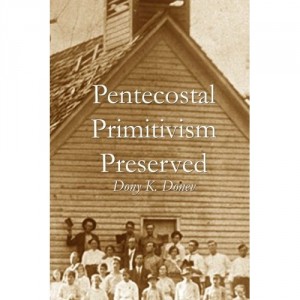
On April 6, 1906 William J. Seymour and the faithful few gathered with him at the Asberry house, decided to engage in a ten-day fast while waiting on the baptism in the Spirit. The first baptism with the Holy Spirit would occur just three days later. Seymour himself would be baptized on the sixth day of the fast and on the seventh, which was Good Friday, Seymour and his followers leased an abandoned church property at 312 Azusa Street and begin cleaning it up. Easter was on April 15, 1906 when they held their very first Pentecostal service at Azusa Street. The rest is history…
Azusa Street Chronology 110 Years Ago…

JANUARY 2, 1906 William SEYMOUR ENROLLS in Charles PARHAM’S BIBLE TRAINING SCHOOL in Houston, Texas
FEBRUARY 1, 1906 During early February 1906, William J. Seymour receives an invitation from Mrs. Julia W. Hutchins to serve as pastor of the Holiness Church congregation she has founded in Los Angeles, California.
FEBRUARY 10, 1906 SEYMOUR LEAVES the BIBLE SCHOOL
FEBRUARY 22, 1906 William J. Seymour arrives in Los Angeles, California
FEBRUARY 24, 1906 Seymour preaches his first sermon as pastor of the Holiness Church at 9th Street and Santa Fe Avenue. He continues preaching on Sunday, February 25; Tuesday, February 27; and Friday, March 2, while holding meetings at 3 p.m. each afternoon.
MARCH 4, 1906 Seymour is LOCKED OUT of the church
MARCH 7, 1906 PRAYER MEETING at 114 SOUTH UNION STREET
MARCH 12, 1906 NIGHTLY MEETINGS BEGIN at 312 N. BONNIE BRAE St.
APRIL 6, 1906 The group at the Asburry house decides to engage in a 10-day fast while they pray for the baptism in the Spirit.
APRIL 9, 1906 FIRST BAPTISM IN THE HOLY SPIRIT IN LOS ANGELES
APRIL 12, 1906 William J. Seymour receives his baptism in the Holy Spirit and speaks in tongues.
APRIL 13, 1906 On Good Friday, Seymour and his friends lease the property at 312 Azusa Street and begin cleaning it up.
APRIL 15, 1906 SEYMOUR’S FIRST SERVICE AT 312 AZUSA STREET on EASTER 1906
APRIL 17, 1906 The LA TIMES INVESTIGATES
APRIL 18, 1906 At 5:48 a.m., San Francisco, California is rocked by an earthquake. During the next 4 days, the city burns. The first report on the Azusa Street Mission appears under the title, “Weird Babel of Tongues,” in the Los Angeles Daily Times. The Mission begins to grow.
APRIL 19, 1906 Los Angeles feels two earthquakes.
APRIL 21, 1906 BARTLEMAN WRITES “THE EARTHQUAKE!!!”
Speaking in Tongues in America Prior to the Azusa Street Revival of 1906 (Diamonds in the Rough-N-Ready Series)

The Azusa street revival swept the globe starting with California
January 1, 1901– The initial phenomenon of speaking in tongues occurred at Parham’s school in Topeka, Kansas
January 6, 1900 – Frank Sanford’s Shiloh school reported that “The gift of tongues has descended”
1896 – Over 100 people baptized in the Shaerer schoolhouse revival conducted by the Christian Union in the North Carolina mountains
1887 – People falling in trances and speaking in tongues were reported at Maria Etter’s revival meetings in Indiana
1874 – Speaking in tongues occurred during healing meetings reported in New York
1873 – William H. Doughty and the Gift People of Rhode Island spoke in tongues
1854 – V. P. Simmons and Robert Boyd reported tongue speaking during Moody’s meetings
Lucy F. Farrow: The Forgotten Apostle of Azusa

Lucy F. Farrow was born in Portsmouth, VA. Unfortunately, her origins there have not been yet fully traced. Her involvement appeared around the summer of 1905 while working as governess in Parham’s home in Houston.
While in Houston, Farrow met Charles Parham, who came there from Baxter Springs, Kansas, in October 1905 and held meetings in Bryan Hall. Parham was preaching about the earlier outpouring of the Holy Spirit that had occurred in his Bethel Bible College in Topeka, Kansas, in January 1901.
Other sources claim, Lucy F. Farrow received the Holy Ghost a little bit earlier on September 6, 1905 after Parham opened up a month-long meeting in Columbus, Kansas. Along with Parham she witnessed events unfold in Zion, Illinois, where John Alexander Dowie was faltering.
Lucy Farrow was the niece of renowned black abolitionist Frederick Douglass. She was serving as pastor of a holiness church in Houston in 1905 when Charles Parham engaged her to work as a governess in his home. Farrow carried the Pentecostal embers back to Texas, on to her home state Virginia and later to Liberia. Her aptitude for igniting the supernatural gifts among others was evident at a 1906 camp meeting near Houston when some 25 seekers stood lined up in a row in front of her. When Farrow “laid hands upon them…many began to speak in tongues at once.”
Although William J. Seymour is acknowledged as the leader of the Azusa Street Revival, it was a black woman, Lucy Farrow, who provided the initial spark that ignited that revival. About the time when Seymour departed to Los Angeles in January of 1906, Lucy Farrow and J. A. Warren also arrived there independently. Other sources claim, they had been sent by Parham to help Seymour with his meetings.
Seymour began his meetings at the Santa Fe Mission on February 24, 1906 but was quickly shut down by the pastor Julia W. Hutchins on March 4, 1906 after a consultation with the South Californian Holiness Association.
The meetings then moved to 214 Bonnie Brae St., home of Richard and Ruth Asberry. As a result, Edward S. Lee was the first one was baptized in the Spirit and spoke in other tongues in the late afternoon when William J. Seymour and Lucy F. Farrow laid hands on him for healing at his house. At 7:30 p.m., the group went back to Bonnie Brae for the evening meeting and before the night was over, Jennie Evans Moore and several others joined him.
It has been said that no one associated with the prayer meeting led by Seymour had spoken in tongues until Farrow, at Seymour’s request, arrived on the scene and began laying her hands on people and seeing God fill them with the Holy Spirit as in the book of Acts. She also ministered with power across the southern United States and in Liberia in West Africa. She lived out her final years in Los Angeles, where there were reported healings and remarkable answers to prayer through her ministry.


